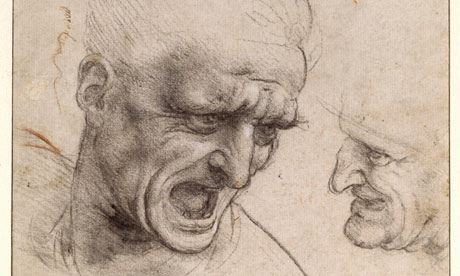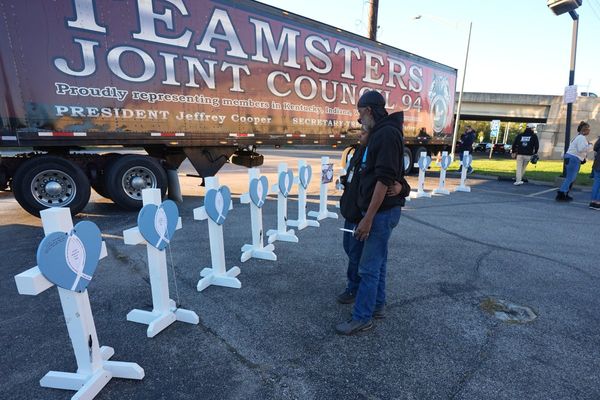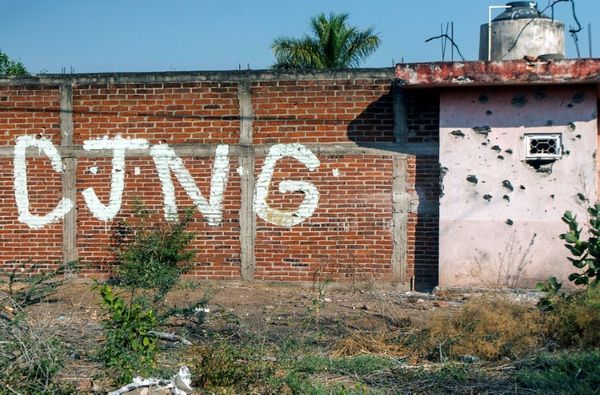
War is coming to London. A drawing that shows us the reality of battle reflected in an old warrior's eyes will be shown this autumn at the Royal Academy, and it brings with it the despair, sorrow and numbness of a lifetime of violence.
The drawing is by Leonardo da Vinci. When he drew this compelling head, flanked by a second grimacing profile, in about 1504 he was in his early fifties and had spent much of his life working with soldiers and men of war. When he was about 30, the painter left his native Tuscany and went to Milan, where he applied for a job at the court of Ludovico Sforza, not as an artist but a "master of war". His surviving notebooks show that he did indeed design a staggering variety of bizarre and cruel weapons in Milan, including missiles, machine guns and an armoured car. Then at the start of the 16th century he set off on his travels again, and in 1502 became a military engineer to the terrifying warrior Cesare Borgia.
Those experiences are distilled in the bleak eyes, the despairing scream and the leathery skin – superbly created using soft grey shade – of Leonardo's bitter survivor. He has death in his eyes. What has he seen? What has he done? We see in this portrait the faces and the inner beings of mercenary soldiers Leonardo knew, fighting their battles for power and money. The drawing has a nightmare quality reminiscent of Shakespeare's Macbeth, as the weary soldier screams as he glimpses the evil of his life.
Leonardo da Vinci's portrait of military psychology is astonishingly modern. It speaks to our age of war as truthfully as it spoke to his own. It is fascinating to compare the mask of rage he draws so acutely with the shell-shocked face of a soldier photographed by Don McCullin in Vietnam.Both faces distress us because we are made to imagine what they have seen. In these faces damaged by battle the vast horror of war is suggested more profoundly than in a hundred gory pictures. War destroyed minds then, and it destroys them now, but Leonardo looks into its abyss and keeps a steady drawing hand.
!["[T]he First and Fifth Amendments Require ICE to Provide Information About the Whereabouts of a Detained Person"](https://images.inkl.com/s3/publisher/cover/212/reason-cover.png?w=600)






